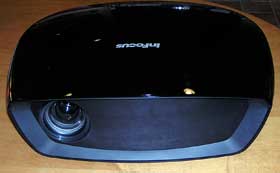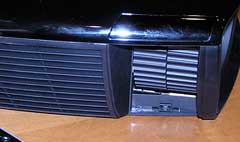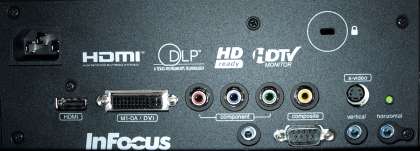- InFocus IN83 Darkchip4 1080p DLP Home Theater Projector Review: Overview
- InFocus IN83 Projector: Physical Tour
- InFocus IN83 Darkchip4 Home Theater Projector Review: Image Quality - 2
- InFocus IN83 Darkchip4 Home Theater Projector Review: Image Quality 3
- InFocus IN83 Darkchip4 Home Theater Projector Review: Image Quality 4
- InFocus IN83 Darkchip4 Home Theater Projector Review: Image Quality 5
- InFocus IN83 Darkchip4 Home Theater Projector Review: Image Quality 6
- InFocus IN83 Darkchip4 Home Theater Projector Review: Image Quality 7
- InFocus IN83 Darkchip4 Home Theater Projector Review: Image Quality 8
- InFocus IN83 Home Theater Projector: Warranty
- InFocus IN83 Home Theater Projector: Summary, Pros and Cons
- InFocus IN83 Projector: Typical Capabilities
- InFocus IN83 vs. Optoma HD81-LV
- InFocus IN83 Home Theater Projector: Summary
- InFocus Play Big IN83 Projector Specifications
- Home
- All Reviews
- By Category
- By Manufacturer
- Best Projectors
- Best Projectors By Category
- Best Projectors On Amazon
- Best 4K Projectors
- Best Ultra Short Throw Projectors
- Best Laser TVs
- Best Gaming Projectors
- Best Home Theater Projectors
- Best Projectors Under $1,000
- Best Projectors Under $500
- Best Portable Projectors
- Best Outdoor Projectors
- Best Bright Budget-Friendly Outdoor Projectors
- Best Battery Powered Outdoor Projectors
- Best Outdoor Projection Screens
- Industry News
- Reports
- Projector Manufacturers
- Manufacturer Terminology
- Manufacturers
- Recent Articles
- Custom Integration
- Projection Terms
- Projector Manufacturers Categories
- Videos
- Blog
Close
Menu
- All Reviews
- By Category
- By Manufacturer
- Best Projectors By Category
- Best Projectors On Amazon
- Best 4K Projectors
- Best Ultra Short Throw Projectors
- Best Laser TVs
- Best Gaming Projectors
- Best Home Theater Projectors
- Best Projectors Under $1,000
- Best Projectors Under $500
- Best Portable Projectors
- Best Outdoor Projectors
- Best Bright Budget-Friendly Outdoor Projectors
- Best Battery Powered Outdoor Projectors
- Best Outdoor Projection Screens
- Latest News
- Reports & Guides
- Manufacturers
- Articles
- Custom Integration
- Projection Terms
- Blog
close




